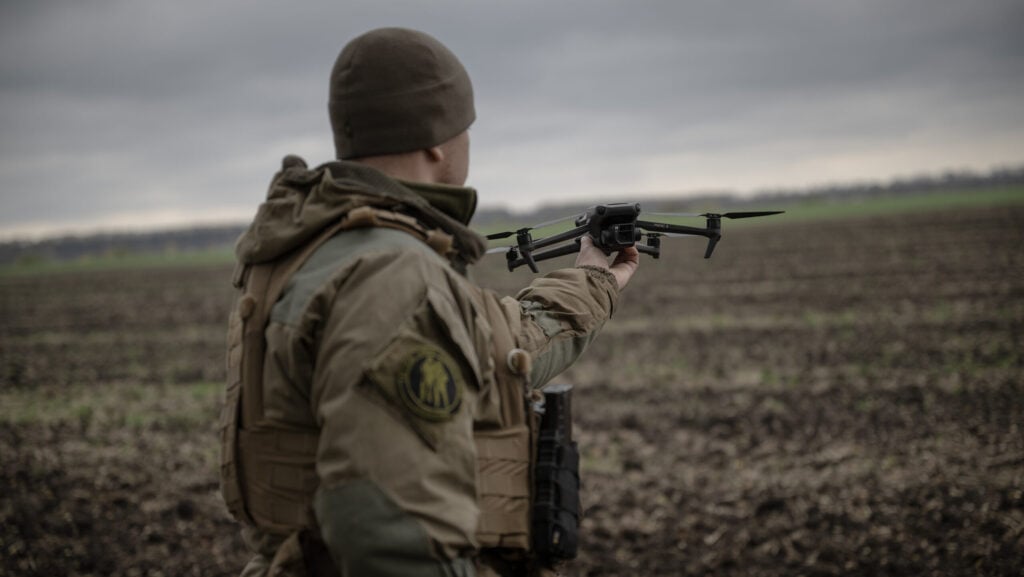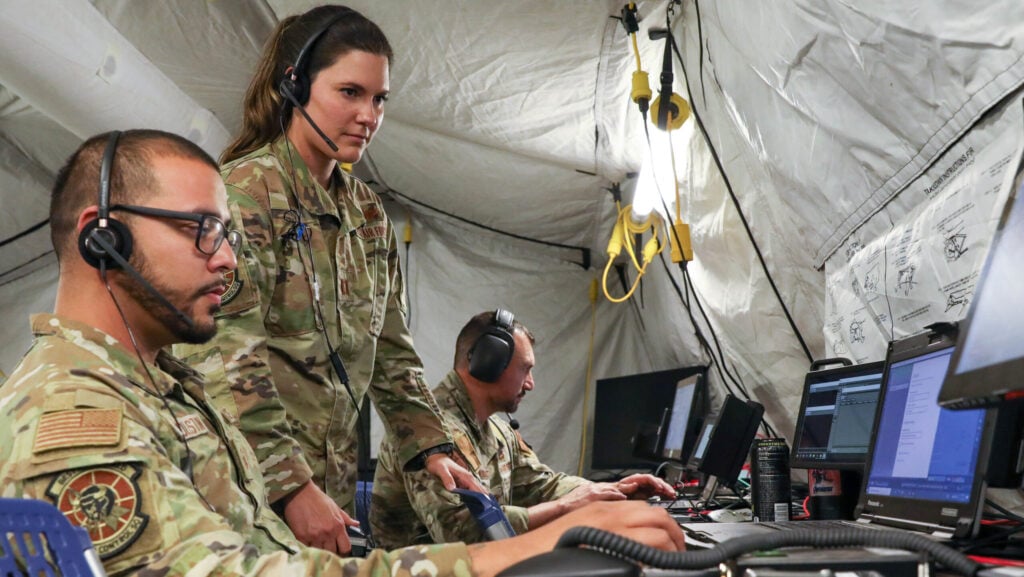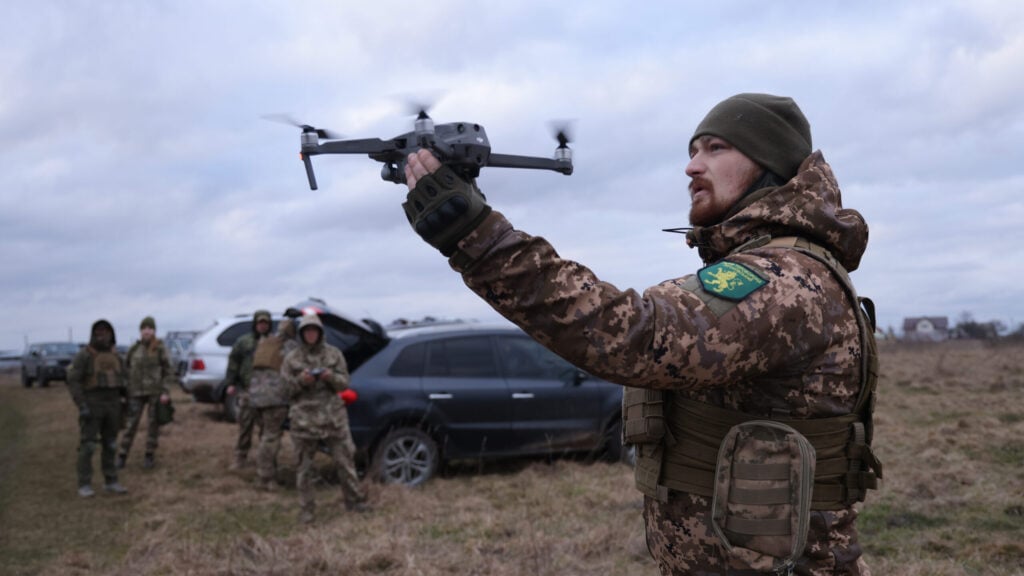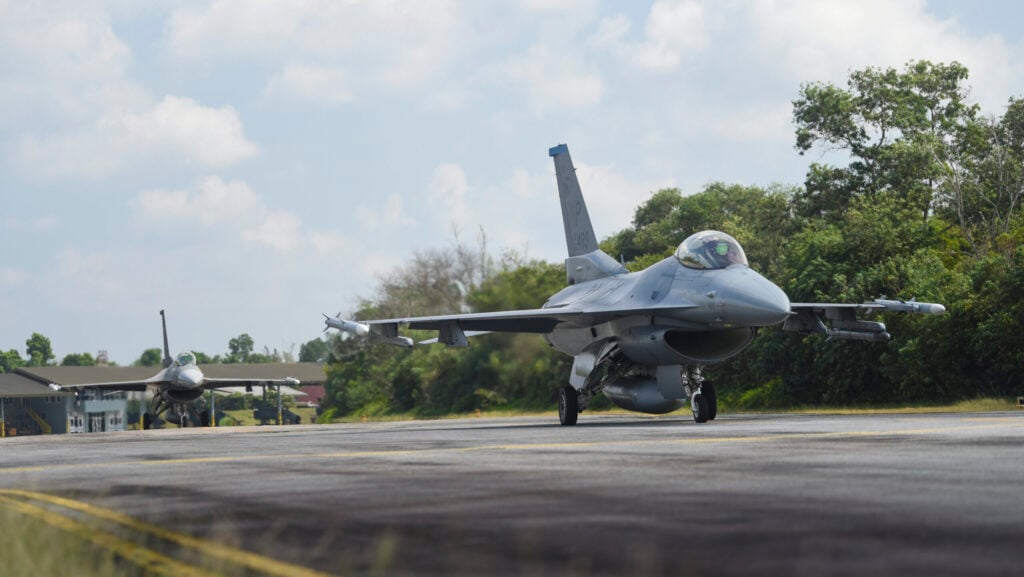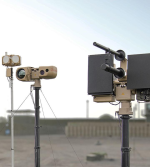"There is a reason technology is often called a 'force multiplier' — it’s best when it helps our forces, not when it replaces them," write Rachel Hoff and Reed Kessler of the Reagan Institute.
By
RACHEL HOFF and
REED KESSLERon February 16, 2024 at 12:40 PM
The twin conflicts in Ukraine and Gaza are providing two very different sets of lessons for how militaries can and should incorporate technology. In this new op-ed, Rachel Hoff and Reed Kessler of the Ronald Reagan Institute argue the US needs to make sure it’s learning why it’s not enough just to have the best tech.
Over the last 10 years of the Reagan National Defense Forum, a consensus has emerged that in America’s long-term competition with China, our ability to deter conflict (and, if necessary, to fight and win) hinges on our
technological superiority. At December’s event, the imperative to move faster to integrate innovative technologies into US warfighting systems took center stage in a new way. As Air Force Chief of Staff Gen. David Allvin noted at the time,
“The future will be all about human-machine teaming.”
But
simply having cutting-edge technology isn’t enough — a lesson that is playing out live, in different ways, on the battlefields in Ukraine and Israel. American policymakers would be wise to internalize these lessons as quickly possible as they consider how to best prepare for great power competition.
Start with
Israel, where one of the most advanced militaries in the world was
caught by surprise as a low-tech adversary
plowed through its billion-dollar wall on the Gaza border. Analysts continue to evaluate what conditions allowed the Oct. 7 attacks by Hamas to occur, but a central critique is that the attacks were successful, at least in part,
because of Israel’s over-reliance on technology as a cure-all.
Israel’s impressive defense-tech sector and technologically sophisticated military led planners to believe that its “
smart wall” could relieve the need for as many boots on the ground along the Gaza border, freeing up additional manpower to deploy in the West Bank instead. On paper, the border fence — fitted with advanced sensors, radar, and automated machine guns — in conjunction with the
Iron Dome would provide ample warning of an incoming threat to muster an adequate response. Despite a historical doctrine favoring offensive action due to limited strategic depth,
Israel was gradually lulled into a defensive posture that relied heavily on its overwhelming technological superiority.
Hamas didn’t need advanced technologies to study points of weakness along the Gazan border and launch an asymmetric attack to exploit these opportunities. Low-tech capabilities enabled its success. Hamas avoided digital communications to evade detection by using hard-wired phones. It used commercial, low-tech drones traveling at a speed and altitude that thwarted Israeli sensors and radar to drop explosives on automated machine guns and communications towers, jamming the IDF’s calls for reinforcements, while snipers blinded Israeli forces by targeting surveillance cameras. Hamas identified vulnerable breach points and used bulldozers to bust through the smart wall and deliver fighters across the border, overwhelming the reduced IDF troop presence.
Israel’s reliance on technology as a substitute for boots on the ground translated to a single point of failure that led to confusion, chaos, and mass violence.
Contrast that outcome with what has happened over two years of fighting in
Ukraine.
Ukrainians are using high-tech capabilities to amplify their military power — but pairing it with
savvy force employment. Their use of
unmanned and autonomous systems is integrated into the focused efforts of their human troops, not as a replacement for them.
Sensors,
attritable drones, cloud technology, Starlink satellites, artificial intelligence, and civilian apps like Diia help locate enemy forces, identify targeting solutions, and guide fires. All of it is
designed to enable military personnel to make optimal decisions on the battlefield. The
empowerment of Ukrainian soldiers and sailors at all levels to show initiative, experiment with technology, and integrate it into their combined arms tactics has outclassed a rigid, highly centralized, and unimaginative Russian military for much of the war’s trajectory.
These two case studies demonstrate
the power of pairing capable soldiers with technology, as well as
the peril of attempting to replace the former with the latter.
Kyiv’s integration of technology complements its focused war effort centered on the force employment of
its soldiers, acting as a force multiplier. Conversely,
Tel Aviv’s drift toward using technology as a stand-in for humans to guard the border with Gaza demonstrates the limits of technology alone.
Technological breakthroughs show enormous promise across the spectrum of warfighting. As the United States grapples with the challenge of the PRC as a pacing competitor bent on technological supremacy, concerted efforts to rebuild America’s
military-technical edge will be critical to our national security. We can and should strive to test, develop, and field these new capabilities to ensure that American servicemen and women have the best tools at their disposal and never walk into a fair fight.
But
there is a reason technology is often called a “force multiplier” — it’s best when it helps our forces, not when it replaces them. All of it leads back to the basic principles of multiplication: 1 x 10 equals 10, but 0 x 10 unfortunately still equals 0. The experiences of allies and partners in ongoing conflicts against very different enemies are teaching us where innovation has the potential to exponentially improve warfighting capabilities, but also where we should guard against an over-reliance on technology that exposes new vulnerabilities.
As we look to tomorrow’s fight, we would do well to remember that the United States has the most highly trained and capable military in the world not only because of the resources at its disposal but because of its human capital. As US Secretary of Defense Lloyd Austin reminded us at the Reagan National Defense Forum, “Our people are the greatest strategic asset that we have.”
Rachel Hoff serves as Policy Director at the Ronald Reagan Institute, the Washington DC office of the Ronald Reagan Presidential Foundation. Before joining the Institute, she was Speechwriter and Policy Advisor for John McCain at the Senate Armed Services Committee.
Reed Kessler is the Associate Director of Policy at the Ronald Reagan Institute in Washington D.C. She previously served at the Department of State in the Bureau of Conflict and Stabilization Operations, the U.S. Mission to the United Nations, the UN Operations and Crisis Centre and the Council on Foreign Relations. Reed also holds an Olympic world record as the youngest athlete ever selected to compete in her sport at the London Olympics.

 news.err.ee
news.err.ee




